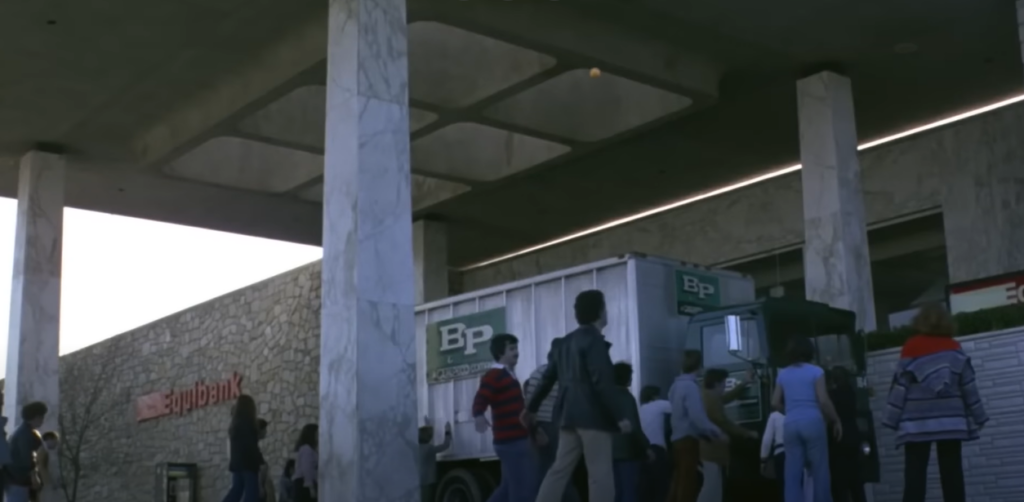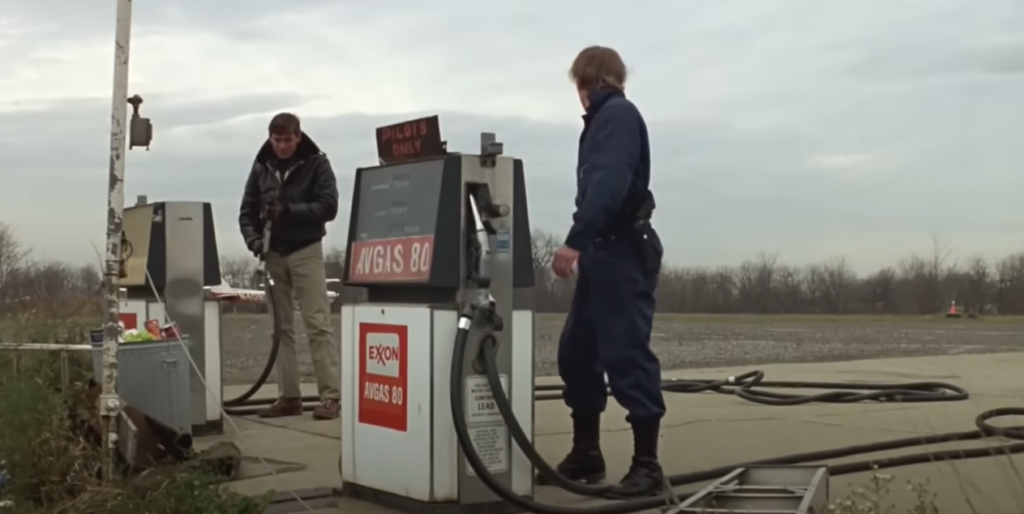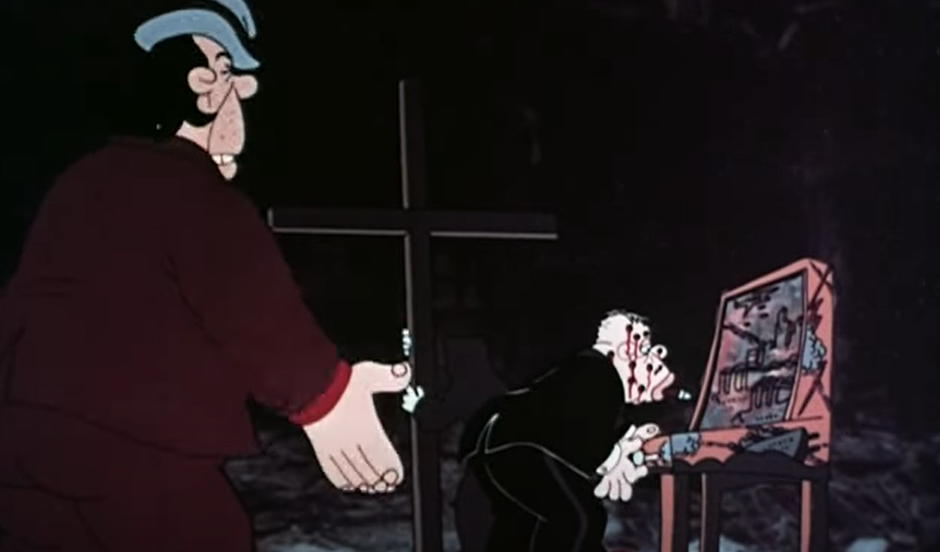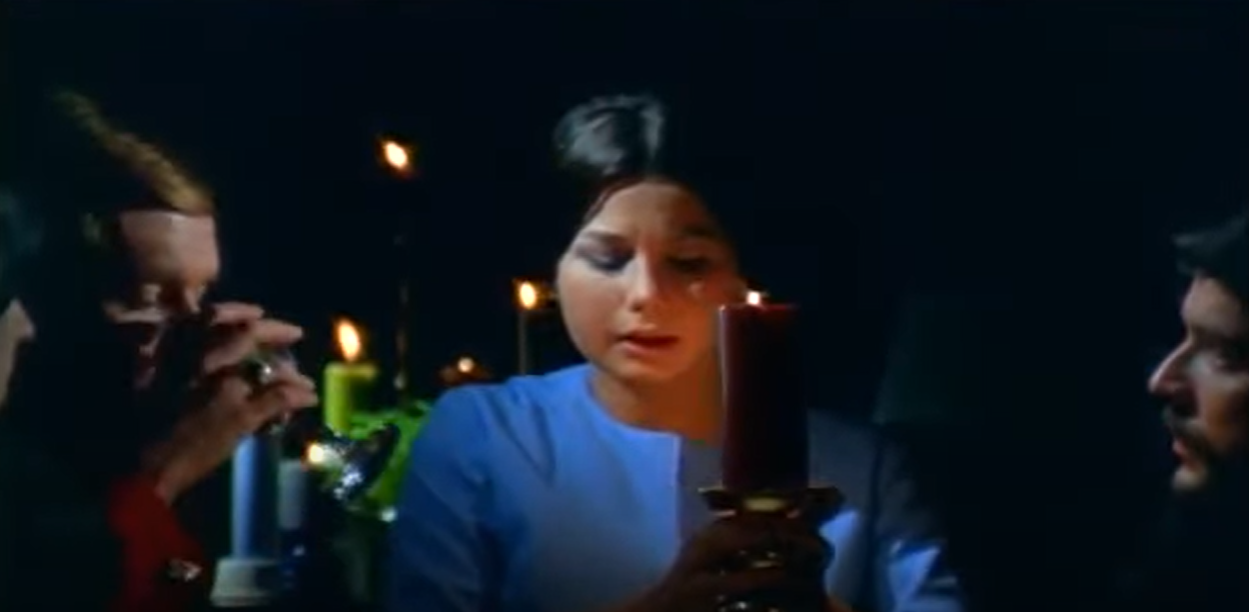Despite its 1968 release, George A. Romero’s “Night of the Living Dead” is essential in any discussion about 70s zombie cinema. The film broke away from the traditional portrayal of zombies as mind-controlled creatures, instead presenting them as reanimated corpses with an insatiable hunger for human flesh. Romero’s interpretation of zombies was a significant departure from previous incarnations and would form the cornerstone for the modern zombie genre.
While “Night of the Living Dead” primarily offered a raw, visceral horror experience, its subtle socio-political commentary also resonated with audiences and critics alike. The film was a product of its time, reflecting America’s turbulent socio-political landscape – a trend that would be a hallmark of 70s zombie cinema.
Zombies Go Global: The Influence of European Cinema
While American directors like Romero were pushing boundaries in the zombie genre, European filmmakers brought their unique stylistic and narrative sensibilities to the table. In the 70s, this international influence was most notably seen in the works of Italian directors like Lucio Fulci and Jorge Grau.
Fulci’s “Zombie” (also known as “Zombi 2”) became one of the most memorable zombie films of the 70s, achieving cult status for its explicit gore and shocking scenes. This film, alongside Grau’s “The Living Dead at Manchester Morgue” and “Let Sleeping Corpses Lie”, showed a willingness to push the envelope further, resulting in visceral, gritty, and often disturbing portrayals of the undead.
Key European Directors and Their Zombie Films in the 70s
| Director | Nationality | Key Films |
|---|---|---|
| Lucio Fulci | Italian | “Zombie” (1979) |
| Jorge Grau | Spanish | “The Living Dead at Manchester Morgue” (1974), “Let Sleeping Corpses Lie” (1974) |
The Romero Legacy Continues: “Dawn of the Dead”
In 1978, George A. Romero, an undisputed master of horror, released the highly anticipated sequel to his groundbreaking and genre-defining film, “Night of the Living Dead.” Titled “Dawn of the Dead,” this cinematic gem further solidified Romero’s position as a pioneer of the zombie subgenre. Not only did “Dawn of the Dead” deliver thrills and chills to audiences, but it also presented a thought-provoking social commentary that transcended the realm of horror.
Setting the Stage
A World Gone Mad “Dawn of the Dead” takes place in a bleak and chaotic world, overrun by hordes of flesh-eating zombies. As society collapses under the weight of the undead menace, a small group of survivors seeks refuge in an unlikely place – a shopping mall. This seemingly incongruous choice of sanctuary serves as a backdrop for Romero’s keen exploration of human behavior and societal ills.
The Mall as a Microcosm of Society
A Satirical Take on Consumerism In a stroke of genius, Romero uses the shopping mall as a microcosm of society, exposing the absurdity of consumerism amidst the apocalypse. The mall, once a symbol of material abundance and capitalist prosperity, now stands abandoned, its former glitz and glamour replaced by a haunting emptiness. As the survivors barricade themselves within the mall’s walls, they are inadvertently confronted with their own consumer-driven desires.
Key Characters in “Dawn of the Dead”
| Character | Description |
|---|---|
| Fran | A resourceful and independent television producer |
| Peter | A level-headed SWAT officer |
| Roger | A brash and impulsive SWAT officer |
| Stephen “Flyboy” | A helicopter pilot and Fran’s boyfriend |
Survival and Self-Discovery
Themes Explored Amidst the constant threat of the undead, “Dawn of the Dead” delves into profound themes that resonate with the audience on a deeper level:
- Survival Instincts: The characters’ struggle for survival highlights the resilience of the human spirit when faced with insurmountable odds;
- Identity and Purpose: As society crumbles, the survivors grapple with questions of identity and purpose. Their journey in the mall prompts self-discovery and introspection;
- Morality and Desensitization: The apocalypse challenges the characters’ moral compasses. They confront the question of whether to retain their humanity or succumb to desensitization.
Distinct Features of 70s Zombie Cinema

The zombie movies of the 1970s were characterized by several unique elements that set them apart from other horror films of their time. These distinctive features contributed to the enduring popularity and impact of the genre, making them a significant part of cinematic history.
Practical Effects
The 1970s marked a time before the advent of sophisticated digital technology in filmmaking. As a result, practical effects played a crucial role in creating the eerie and chilling atmosphere of zombie films. Makeup artists and special effects technicians honed their craft, employing various materials to bring the undead to life:
| Material | Purpose |
|---|---|
| Latex | Used to create realistic zombie prosthetics. |
| Gelatin | Employed for creating rotting flesh and wounds. |
| Corn syrup | Utilized as fake blood to enhance gore in scenes. |
The reliance on practical effects lent a palpable and tangible quality to the zombies, making them appear more believable and terrifying to the audience. The tactile nature of these effects added to the overall visceral aesthetic of 70s zombie cinema.
Sociopolitical Themes
Beyond being mere horror flicks, the zombie movies of the 1970s often served as mirrors to society, subtly reflecting prevailing sociopolitical issues of the era. Filmmakers cleverly wove in social commentaries, providing deeper layers of meaning beneath the surface of zombie gore:
- Racism: Some zombie films allegorically addressed racial tensions and discrimination prevalent during the 70s. Zombies represented a faceless, mindless mob, echoing the dehumanization of marginalized groups in society;
- Consumerism: The rise of consumer culture and materialism was critiqued in certain zombie films. The undead, mindlessly driven by an insatiable hunger for flesh, symbolized the mindless pursuit of material possessions;
- Environmental Concerns: A few movies hinted at environmental themes, underscoring the consequences of human actions on nature. Zombies, often a result of some catastrophic event, could be seen as a representation of the consequences of ecological neglect;
- Government Distrust: With the backdrop of political upheaval and distrust of authority figures, certain zombie films depicted the collapse of societal structures and the failure of governments to protect their citizens.
Through these allegorical elements, the zombie genre became a powerful vessel for filmmakers to express their thoughts on broader societal issues, elevating these films beyond mere horror escapism.
Graphic Violence
The 1970s witnessed a departure from the relatively restrained horror films of earlier decades. Filmmakers of this era embraced a more explicit and graphic approach to violence, unflinchingly depicting brutal scenes of zombie attacks:
- Limb dismemberment, disembowelment, and other gruesome forms of violence were depicted with shocking realism;
- The use of practical effects further amplified the impact of these violent scenes, making them more visceral and unforgettable;
- This unapologetic portrayal of violence served to intensify the horror and engage audiences on a deeper emotional level.
The increased graphic violence in 70s zombie cinema challenged conventional norms and pushed the boundaries of what was deemed acceptable in film, leaving an indelible mark on the horror genre.
Analysis of Prominent 70s Zombie Films

Let’s delve into a detailed analysis of the critical zombie films of the 70s, exploring their themes, stylistic choices, and overall impact on the genre.
“Dawn of the Dead” (1978)
George A. Romero’s “Dawn of the Dead” emerges as a pinnacle of zombie cinema, building on the foundation laid by its predecessor, “Night of the Living Dead.” The film preserves the raw horror of its predecessor while infusing a layer of incisive social critique. At the heart of the movie is a haunting shopping mall setting, which serves as an ingenious metaphor for mindless consumerism that dominated the era.
- Consumer Society: The mall, once a symbol of material abundance and consumer-driven culture, transforms into a macabre arena where zombies aimlessly wander. This portrayal subtly criticizes the excesses and emptiness of consumer culture, reflecting on society’s relentless pursuit of material possessions;
- Graphic Violence: Romero’s unflinching portrayal of violence and gore heightens the film’s impact, leaving an indelible impression on the audience. This stark approach adds an element of realism and brutality to the narrative.
“The Living Dead at Manchester Morgue” (1974)
Jorge Grau’s “The Living Dead at Manchester Morgue” stands out as a thought-provoking zombie film, distinguished by its environmental undertones. The plot revolves around an experimental agricultural machine, designed to eliminate pests but inadvertently reanimates the dead. Here, the zombies are a metaphor for nature’s retaliation against humanity’s harmful interference.
- Environmental Consequences: The film subtly conveys a message about ecological imbalance and the unforeseen consequences of human actions. The reanimated dead serve as an embodiment of nature’s fury and its attempts to restore balance;
- Atmospheric Horror: Grau skillfully creates a foreboding atmosphere, blending elements of rural landscapes and eerie cinematography to heighten the film’s sense of dread.
“Let Sleeping Corpses Lie” (1974)
Also known as “Don’t Open the Window,” “Let Sleeping Corpses Lie” delivers a unique blend of undead horror and political commentary. The movie criticizes the government’s negligence during a zombie outbreak, reflecting the growing public distrust of authorities during the politically tumultuous 1970s.
- Government Distrust: Against the backdrop of societal unrest and political turbulence, the film portrays a government more concerned with concealing the zombie menace than protecting its citizens. This resonates with the era’s skepticism toward those in power;
- Suspenseful Pacing: The film employs slow-burn tension to immerse viewers in an atmosphere of unease, enhancing the horror experience through psychological dread.
“Zombie” (1979)
Lucio Fulci’s “Zombie,” also known as “Zombi 2,” pushes the boundaries of graphic horror in the zombie genre. While it features shocking and unforgettable scenes of gore, it also weaves a tale of survival and desperation amidst a zombie outbreak.
- Survival Instincts: The film delves into the primal instincts of survival as characters are pushed to their limits by the relentless onslaught of the undead. It explores how humanity confronts its own vulnerability in the face of an apocalyptic scenario;
- Visceral Horror: Fulci’s unapologetic approach to visceral horror leaves a lasting impact on the audience, propelling the film into cult status for horror enthusiasts.
Conclusion
The 70s were a golden age for zombie cinema. The decade saw the genre evolve from its B-movie origins to a platform for nuanced social critique, wrapped up in a package of visceral horror and gore. It paved the way for the various interpretations of zombie lore seen in today’s cinema and television, making it a fascinating era to revisit for any zombie or horror aficionado.
FAQ
The 70s is seen as a transformative era for zombie movies as it saw a departure from the traditional depictions of zombies and brought in new narrative and stylistic elements. These films began using zombies as metaphors for social critique, and this era also saw a significant increase in graphic violence and practical special effects.
European cinema, particularly Italian and Spanish, brought distinctive stylistic and narrative elements to zombie films in the 70s. Directors like Lucio Fulci and Jorge Grau became renowned for their explicit depiction of violence and gore, pushing the boundaries of the genre and influencing many subsequent zombie films.
Practical effects in 70s zombie films contributed to the raw, visceral feel of these movies. They created a tangible sense of horror and dread that remains compelling to this day, despite the advent of more advanced digital effects.
The 70s zombie films explored a variety of societal issues. They touched on themes like racism, consumerism, environmentalism, and government distrust. The beauty of these films lies in their ability to address these issues subtly, using the metaphor of the undead to reflect societal anxieties and concerns.




